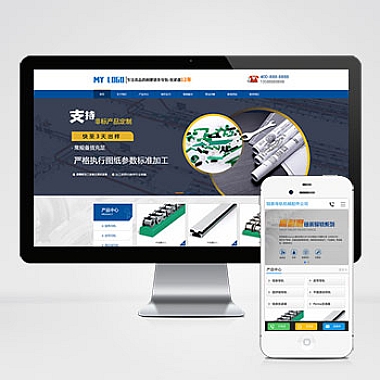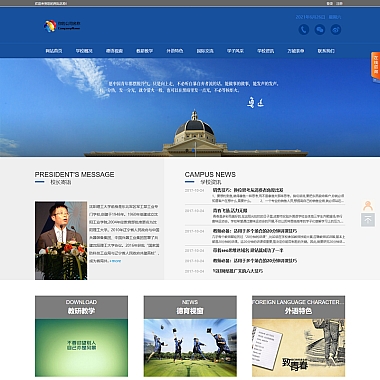Java NIO详解
解决方案
Java NIO(New Input/Output)是Java 1.4引入的一个新的I/O API,旨在提高I/O操作的性能。与传统的Java I/O相比,NIO提供了非阻塞I/O、通道(Channel)、缓冲区(Buffer)以及选择器(Selector)等功能。Java NIO的核心概念,并通过代码示例展示如何使用NIO进行文件读写、网络通信等操作。
1. Java NIO核心概念
Java NIO的主要特点是基于缓冲区和通道的操作模型。以下是几个关键概念:
- Buffer(缓冲区):数据容器,用于存储不同类型的字节数据。
- Channel(通道):用于在缓冲区和底层数据源(如文件或套接字)之间传输数据。
- Selector(选择器):用于监听多个通道上的事件(如连接请求或数据到达)。
- 非阻塞I/O:允许程序在等待I/O操作完成时继续执行其他任务。
2. 文件读写操作
2.1 使用FileChannel读取文件
以下是一个使用FileChannel读取文件内容的示例:
java
import java.io.FileInputStream;
import java.io.IOException;
import java.nio.ByteBuffer;
import java.nio.channels.FileChannel;</p>
<p>public class FileReadExample {
public static void main(String[] args) {
try (FileInputStream fis = new FileInputStream("example.txt");
FileChannel channel = fis.getChannel()) {</p>
<pre><code> ByteBuffer buffer = ByteBuffer.allocate(1024);
while (channel.read(buffer) > 0) {
buffer.flip(); // 切换到读模式
while (buffer.hasRemaining()) {
System.out.print((char) buffer.get());
}
buffer.clear(); // 清空缓冲区以供下次写入
}
} catch (IOException e) {
e.printStackTrace();
}
}
}
2.2 使用FileChannel写入文件
以下是一个使用FileChannel写入文件内容的示例:
java
import java.io.FileOutputStream;
import java.io.IOException;
import java.nio.ByteBuffer;
import java.nio.channels.FileChannel;</p>
<p>public class FileWriteExample {
public static void main(String[] args) {
try (FileOutputStream fos = new FileOutputStream("output.txt");
FileChannel channel = fos.getChannel()) {</p>
<pre><code> String content = "Hello, Java NIO!";
ByteBuffer buffer = ByteBuffer.allocate(1024);
buffer.put(content.getBytes());
buffer.flip(); // 切换到读模式
channel.write(buffer);
} catch (IOException e) {
e.printStackTrace();
}
}
}
3. 网络通信
3.1 使用SocketChannel实现客户端-服务器通信
3.1.1 服务器端代码
以下是一个简单的服务器端代码,使用ServerSocketChannel监听客户端连接:
java
import java.io.IOException;
import java.net.InetSocketAddress;
import java.nio.ByteBuffer;
import java.nio.channels.ServerSocketChannel;
import java.nio.channels.SocketChannel;</p>
<p>public class NIOServer {
public static void main(String[] args) throws IOException {
ServerSocketChannel serverSocketChannel = ServerSocketChannel.open();
serverSocketChannel.socket().bind(new InetSocketAddress(8080));
serverSocketChannel.configureBlocking(false);</p>
<pre><code> System.out.println("Server is listening on port 8080...");
while (true) {
SocketChannel socketChannel = serverSocketChannel.accept();
if (socketChannel != null) {
handleClient(socketChannel);
}
}
}
private static void handleClient(SocketChannel socketChannel) throws IOException {
ByteBuffer buffer = ByteBuffer.allocate(1024);
int bytesRead = socketChannel.read(buffer);
if (bytesRead > 0) {
buffer.flip();
byte[] data = new byte[buffer.remaining()];
buffer.get(data);
String message = new String(data);
System.out.println("Received: " + message);
socketChannel.write(ByteBuffer.wrap("Message received".getBytes()));
}
socketChannel.close();
}
}
3.1.2 客户端代码
以下是一个简单的客户端代码,使用SocketChannel发送消息到服务器:
java
import java.io.IOException;
import java.net.InetSocketAddress;
import java.nio.ByteBuffer;
import java.nio.channels.SocketChannel;</p>
<p>public class NIOClient {
public static void main(String[] args) throws IOException {
SocketChannel socketChannel = SocketChannel.open();
socketChannel.connect(new InetSocketAddress("localhost", 8080));</p>
<pre><code> String message = "Hello from client!";
socketChannel.write(ByteBuffer.wrap(message.getBytes()));
ByteBuffer buffer = ByteBuffer.allocate(1024);
int bytesRead = socketChannel.read(buffer);
if (bytesRead > 0) {
buffer.flip();
byte[] data = new byte[buffer.remaining()];
buffer.get(data);
System.out.println("Server response: " + new String(data));
}
socketChannel.close();
}
}
4. 非阻塞I/O与多路复用
4.1 使用Selector实现多路复用
Selector是Java NIO中用于处理多个通道事件的核心类。以下是一个使用Selector监听多个客户端连接的示例:
java
import java.io.IOException;
import java.net.InetSocketAddress;
import java.nio.ByteBuffer;
import java.nio.channels.SelectionKey;
import java.nio.channels.Selector;
import java.nio.channels.ServerSocketChannel;
import java.nio.channels.SocketChannel;
import java.util.Iterator;
import java.util.Set;</p>
<p>public class SelectorExample {
public static void main(String[] args) throws IOException {
Selector selector = Selector.open();
ServerSocketChannel serverSocketChannel = ServerSocketChannel.open();
serverSocketChannel.bind(new InetSocketAddress(8080));
serverSocketChannel.configureBlocking(false);
serverSocketChannel.register(selector, SelectionKey.OP_ACCEPT);</p>
<pre><code> System.out.println("Server is listening on port 8080...");
while (true) {
selector.select();
Set<SelectionKey> selectedKeys = selector.selectedKeys();
Iterator<SelectionKey> iterator = selectedKeys.iterator();
while (iterator.hasNext()) {
SelectionKey key = iterator.next();
if (key.isAcceptable()) {
handleAccept(key, selector);
}
if (key.isReadable()) {
handleRead(key);
}
iterator.remove();
}
}
}
private static void handleAccept(SelectionKey key, Selector selector) throws IOException {
ServerSocketChannel serverSocketChannel = (ServerSocketChannel) key.channel();
SocketChannel socketChannel = serverSocketChannel.accept();
socketChannel.configureBlocking(false);
socketChannel.register(selector, SelectionKey.OP_READ);
System.out.println("New connection accepted.");
}
private static void handleRead(SelectionKey key) throws IOException {
SocketChannel socketChannel = (SocketChannel) key.channel();
ByteBuffer buffer = ByteBuffer.allocate(1024);
int bytesRead = socketChannel.read(buffer);
if (bytesRead > 0) {
buffer.flip();
byte[] data = new byte[buffer.remaining()];
buffer.get(data);
System.out.println("Received: " + new String(data));
socketChannel.write(ByteBuffer.wrap("Message received".getBytes()));
}
key.cancel();
socketChannel.close();
}
}
5.
详细Java NIO的核心概念及其应用场景。通过文件读写、网络通信以及非阻塞I/O的示例代码,展示了Java NIO的强大功能。无论是处理大规模文件还是高并发网络通信,Java NIO都能提供高效的解决方案。希望能帮助你更好地理解和使用Java NIO!











